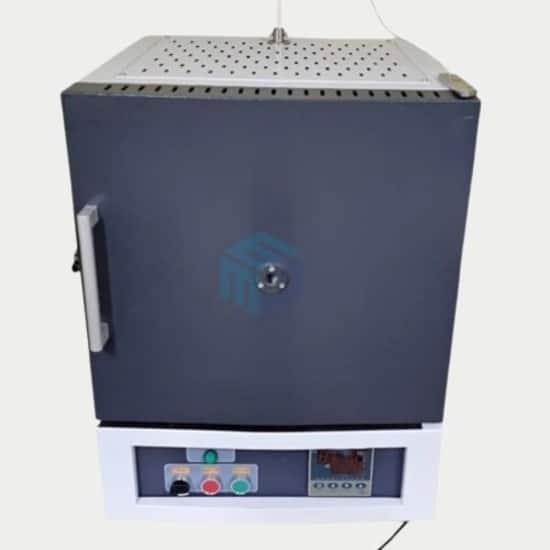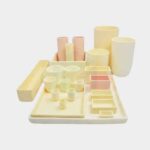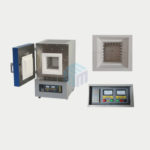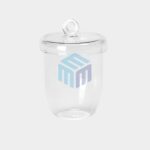Laboratory furnaces are essential equipment in research, quality control, and industrial applications. Whether you’re working in material science, chemistry, or pharmaceuticals, selecting the right furnace is crucial for achieving precise and reliable results. With various types and specifications available, making an informed decision ensures efficiency, safety, and cost-effectiveness. In this guide, we’ll walk you through the key factors to consider when choosing a laboratory furnace for your research.
1. Understanding Your Application Needs
The first step in selecting a laboratory furnace is defining its purpose. Different research and industrial processes require specific furnace types, such as:
-
Muffle Furnaces
– Ideal for ashing, heat treatment, and sample drying.
-
Tube Furnaces
– Suitable for controlled atmosphere processing and thermochemical reactions.
-
Vacuum Furnaces
– Best for processes that require oxidation-free heating, such as sintering or brazing.
-
Chamber Furnaces
– Used for large sample heating and high-temperature applications.
-
Elevating/Lifting Furnace
– Used for applications requiring precise loading and unloading of samples at high temperatures.
-
CVD Furnace
– Ideal for chemical vapor deposition processes used in semiconductor and material research.
-
Microwave Furnace
– Utilizes microwave energy for rapid heating, suitable for ceramics, sintering, and specialized applications.
Understanding the nature of your samples, temperature requirements, and atmosphere conditions will help you narrow down your choices.
2. Temperature Range & Uniformity
Temperature capabilities vary significantly across furnace models. Ensure that the furnace you choose can reach the necessary temperatures for your experiments. Common temperature ranges include:
-
Up to 1100°C
– Suitable for basic applications like drying and low-temperature heat treatment.
-
1100°C – 1700°C
– Ideal for ceramic processing, material testing, and high-temperature reactions.
-
Above 1700°C
– Used in advanced material research and metallurgy.
Uniform temperature distribution is another critical factor, as it ensures consistent heating and reliable results.
3. Furnace Capacity & Size
The furnace size depends on the volume of materials you need to process. Consider:
-
Internal Chamber Dimensions
– Ensure your samples fit comfortably inside.
-
Batch vs. Continuous Processing
– If you need high-throughput experiments, consider a larger or continuous-operation furnace.
-
Space Constraints
– Assess the available laboratory space for proper installation and ventilation.
-
Tilting Furnaces
– Useful for melting and pouring applications, providing ease of material handling and enhanced efficiency.
-
CVD (Chemical Vapor Deposition) Furnaces
– Ideal for advanced material processing, enabling thin-film coating and controlled deposition for research and industrial applications.
4. Heating Elements & Insulation
Different heating elements affect performance and durability. Common types include:
-
Silicon Carbide (SiC)
– Fast heating and long lifespan, suitable for high temperatures.
-
Molybdenum Disilicide (MoSi2)
– Used in ultra-high-temperature furnaces above 1600°C.
-
Nickel-Chrome (NiCr) Alloys
– Suitable for lower temperatures and cost-effective applications.
Insulation materials, such as ceramic fiber or refractory brick, play a role in heat retention and energy efficiency.
5. Atmosphere Control & Safety Features
Some applications require specific gas atmospheres, such as nitrogen, argon, or vacuum conditions. Features to look for include:
-
Gas Flow Control & Sealing
– Prevents contamination and ensures a stable environment.
-
Overheat Protection & Alarms
– Enhances safety and prevents damage.
-
User-Friendly Controls
– Digital interfaces with programmable settings allow precise temperature control.
6. Compliance with Global Standards (Australian, US, Indian etc.)
Laboratory furnaces must comply with relevant safety and performance standards. Ensure your equipment meets:
-
AS/NZS 3820
– Electrical safety requirements for laboratory equipment.
-
ISO 9001 Certified Manufacturers
– Ensures quality and reliability.
-
Workplace Safety Regulations
– Verify compatibility with laboratory ventilation and fire safety standards.
7. Energy Efficiency & Cost Considerations
Energy consumption impacts operating costs. Look for energy-efficient models with features like:
-
Low Heat Loss Designs
– Minimizes energy waste.
-
Programmable Schedules
– Reduces unnecessary operation time.
-
Long-Lasting Components – Ensures durability and lowers maintenance costs.
Balancing upfront investment with long-term operational efficiency will help you choose a cost-effective furnace.
Read also: Distinguish Between Industrial Furnaces and Lab Furnaces
Summary
Selecting the right laboratory furnace requires careful consideration of application needs, temperature requirements, size, heating elements, atmosphere control, compliance, and efficiency. Investing in a high-quality furnace tailored to your specific research ensures precise results, safety, and cost-effectiveness.
At M-Kube, we offer a range of laboratory furnaces that meet Global standards and deliver top-tier performance. Contact us today to explore our selection and find the perfect furnace for your research needs. M-Kube experts have more than 15 years of experience in all these furnaces and can provide you the right guidance in your selection.






